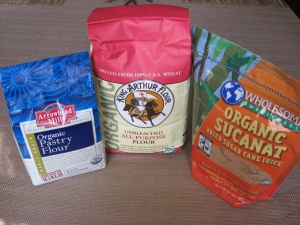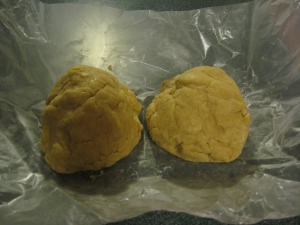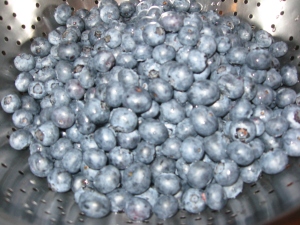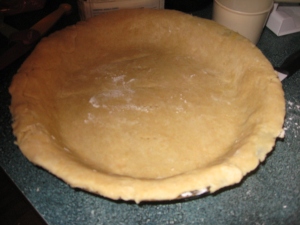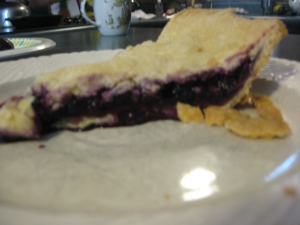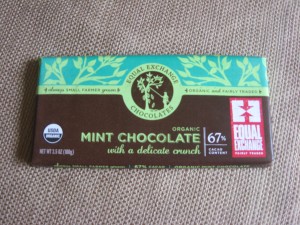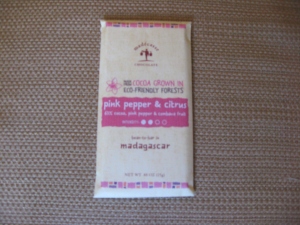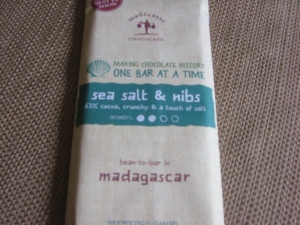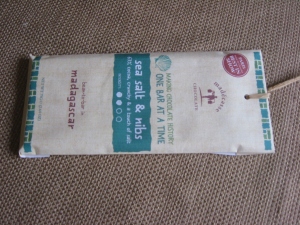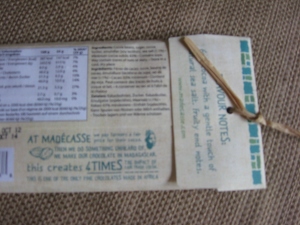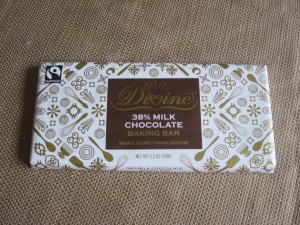I recently baked a fair trade blueberry pie; I used a recipe from my favorite cookbook, Simply in Season. Simply in Season is organized, as its name suggests, around the seasons, with recipes focusing on foods that are “in season” for that particular time of year. In the summer section I found a recipe for blueberry pie under the label Fresh Fruit Pie (on page 160). There were several different pie options, but I chose blueberry 1) because I like blueberry pie and 2) because I had a ton of blueberries.
The recipe calls for:
3 cups of blueberries
2/3 cup of sugar
1/4 cup of tapioca (I used corn syrup because that is what I had)
(Note: The original recipe calls for 1/2 cup of rhubarb, but I am not a fan of rhubarb in pies, so I did not include any. I did, however, substitute 1/2 cup of blueberries in place of the rhubarb.)
I also decided to make homemade pie crust for the pie, which can be found in Simply in Season on page 334 in the All Seasons section.
The pie crust recipe calls for:
1 slightly beaten egg
5 tablespoons of cold water
1 tablespoon of apple cider vinegar
2 cups of flour
1 cup of whole wheat pastry flour
1 cup of chilled butter
1 teaspoon of salt
To make the pie fair trade, I used fair trade sugar (you can see the fair trade logo on the Organic Sucanat).
I started the pie crust before the pie’s filling because the crust needs to be chilled between 20 and 30 minutes before it can be rolled and baked.
First, the egg, cold water, and apple cider vinegar need to be combined in a bowl and than set aside.
Second, the flour, whole wheat pastry flour, butter, and salt need to be cut together; the cookbook recommended using a pastry blender. I just used a butter knife and my hands because I do not own a pastry blender, and this worked fine for me. According to Simply In Season, “Quickly cut together with a pastry blender until chunks of butter are nearly pea-sized,” (p. 334). It is important to be fairly quick, because it is important that the butter does not become too warm.
Thirdly, the wet ingredients need to be mixed into the dry ingredients using a fork; the ingredients should form a dough ball. The cookbook suggested cutting the dough ball into 3 pieces; I cut the dough into two pieces. The dough is then chilled for 20-30 minutes ( I chilled my dough for 30 minutes).
While the dough chilled I prepped the blueberries. This involved rinsing and sorting and took more time than I had initially anticipated. This is also a good time to preheat the oven to 425 degrees F.
Once the blueberries were prepped it was time to take the dough out of the refrigerator. The two dough balls were rolled flat (using a rolling pin and a dusting of flour on wax paper) for a roughly 9 inch pan.
To move the flattened dough, “Fold carefully in half, then in half again, and place point of crust in center of pie plate, opening crust to fill pan,” (Simply In Season, p. 334). Once in the pan, the crust needs to be trimmed with a knife to fit the pan. Also, sprinkle a dash of sugar on the the crust that rests in the bottom of the pan.
Once the pie crusts are prepared, the filling needs to be started so the pie can be placed in the preheated oven. The sugar, corn syrup, and blueberries need to be mixed; I did this by hand in an effort to mix the ingredients thoroughly while avoiding damaging the blueberries.
Once the filling is mixed, it can be poured/scooped into the pie crust.
Once the filling is in the pan, the second pie crust can be moved (in the same way as the first one) and placed on top of the filling. Like the first crust, it should be trimmed to fit the pan.
Using a fork, press the outer rims of the pie crusts together and cut vent holes in the top.
The pie should be placed in the oven at 425 degrees F for 10 minutes.
The oven’s heat should be reduced to 350 degrees F and the pie should bake for another 25-30 minutes.
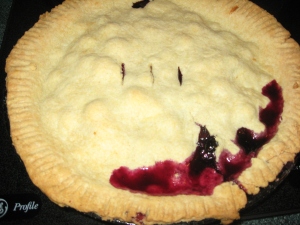 A picture of the finished product; it tasted great, despite (or perhaps because of) the amount of liquid in the center.
A picture of the finished product; it tasted great, despite (or perhaps because of) the amount of liquid in the center.
Contributed by Fair Trade Intern Megan Draper

